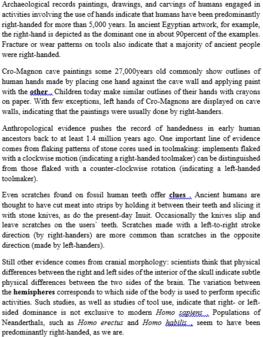Read the following passage and mark the letter A, B, C, or D on your answer sheet to indicate the correct answer to each of the questions from 44 to 55.
Panel painting, common in thirteenth- and fourteenth-century Europe, involved a painstaking, laborious process. Wooden planks were joined, covered with gesso to prepare the surface for painting, and then polished smooth with special tools. On this perfect surface, the artist would sketch a composition with chalk, refine it with inks, and then begin the deliberate process of applying thin layers of egg tempera paint (egg yolk in which pigments are suspended) with small brushes. The successive layering of these meticulously applied paints produced the final translucent colors.
Backgrounds of gold were made by carefully applying sheets of gold leaf, and then embellishing of decorating the gold leaf by punching it with a metal rod on which a pattern had been embossed. Every step in the process was slow and deliberate. The quick-drying tempera demanded that the artist know exactly where each stroke be placed before the brush met the panel, and it required the use of fine brushes. It was, therefore, an ideal technique for emphasizing the hard linear edges and pure, fine areas of color that were so much a part of the overall aesthetic of the time. The notion that an artist could or would dash off an idea in a fit of spontaneous inspiration was completely alien to these deliberately produced works.
Furthermore, making these paintings was so time-consuming that it demanded assistance. All such work was done by collective enterprise in the workshops. The painter or master who is credited with having created the painting may have designed the work and overseen its production, but it is highly unlikely that the artist’s hand applied every stroke of the brush. More likely, numerous assistants, who had been trained to imitate the artist’s style, applied the paint. The carpenter’s shop probably provided the frame and perhaps supplied the panel, and yet another shop supplied the gold. Thus, not only many hands, but also many shops were involved in the final product.
In spite of problems with their condition, restoration, and preservation, many panel paintings have survived, and today many of them are housed in museum collections.
The author mentions all of the following as problems with the survival of panel paintings EXCEPT ______.
A. condition
B. restoration
C. preservation
D. theft




Đáp án : D
D “theft” vì đáp án này không được đề cập